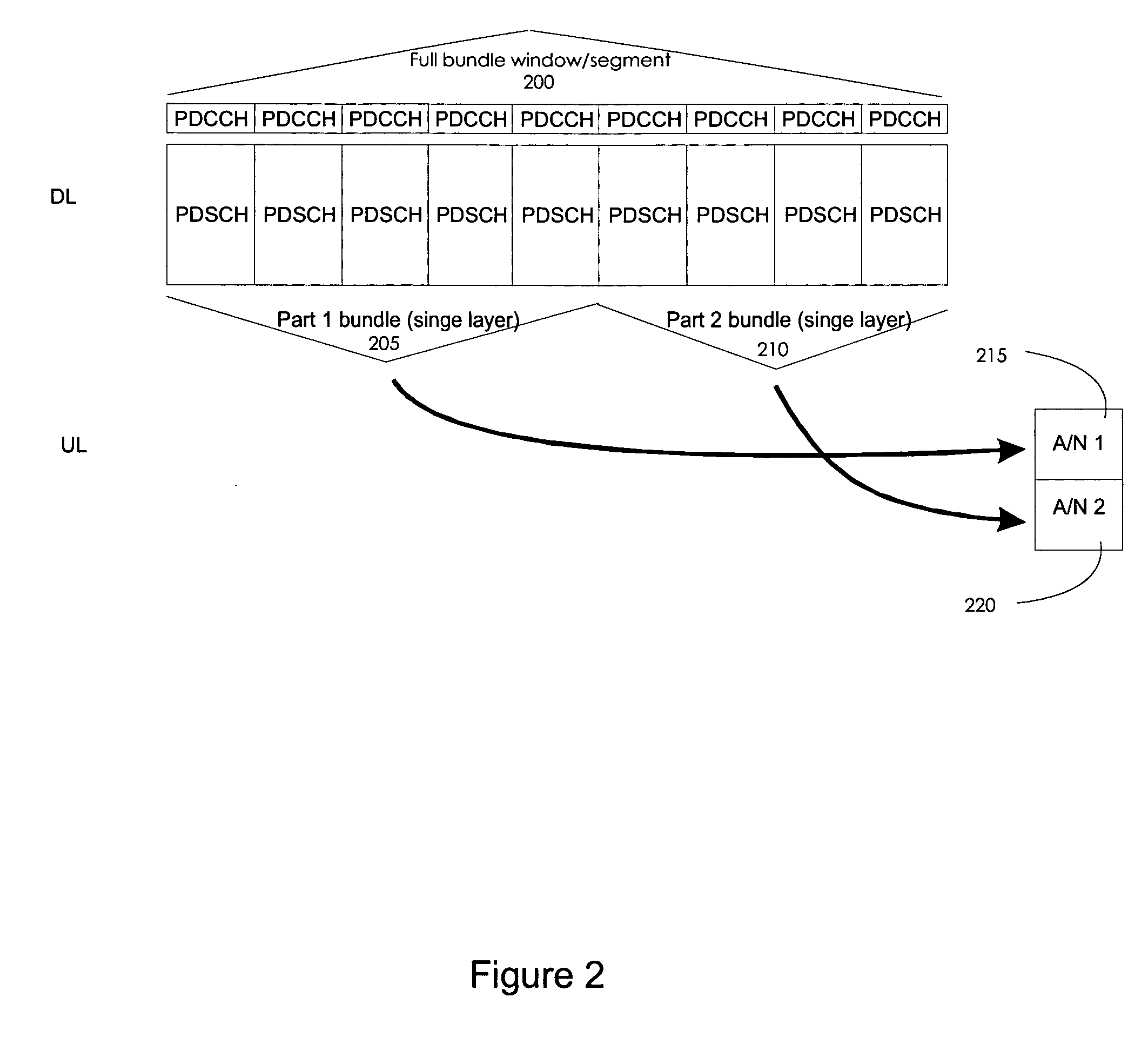Ack/nack transmission on pucch in lte-atdd with nxpdcch structure
a pucch and lte-atdd technology, applied in the field of radio communications, can solve the problems of inability to assume the “blind” common understanding between the enb and the ue, limited resources/time of uplink, and difficulty in facilitating large data etc., to achieve the effect of increasing the reliability of pdcch and facilitating large-rate transmission to each user
- Summary
- Abstract
- Description
- Claims
- Application Information
AI Technical Summary
Benefits of technology
Problems solved by technology
Method used
Image
Examples
Embodiment Construction
[0023]Various embodiments described herein enable different “bundling” methods for downlink transmissions and provide different interpretations of the “ACK / NACK” bit in accordance with LTE Release 8. In accordance with various embodiments, the UE is configured so that it commonly acknowledges all downlink TTIs within a bundle so that if one packet is determined to be erroneous, all packets in that bundle will be retransmitted. Additionally, various embodiments are implemented by allowing an interpretation to be applied to the uplink ACK / NACK field such that the eNB is able to decide how to divide bundled downlink packets into smaller windows which allows for a reduced negative impact on PDCCH detection reliability and / or determine how to interpret, e.g., a two bit ACK / NACK. Such a decision(s) is signalled to the UE so that the UE can effectuate the appropriate mapping and subbundle split. It should be noted that various embodiments can be used with UE that have a sufficient uplink l...
PUM
 Login to View More
Login to View More Abstract
Description
Claims
Application Information
 Login to View More
Login to View More - R&D
- Intellectual Property
- Life Sciences
- Materials
- Tech Scout
- Unparalleled Data Quality
- Higher Quality Content
- 60% Fewer Hallucinations
Browse by: Latest US Patents, China's latest patents, Technical Efficacy Thesaurus, Application Domain, Technology Topic, Popular Technical Reports.
© 2025 PatSnap. All rights reserved.Legal|Privacy policy|Modern Slavery Act Transparency Statement|Sitemap|About US| Contact US: help@patsnap.com



